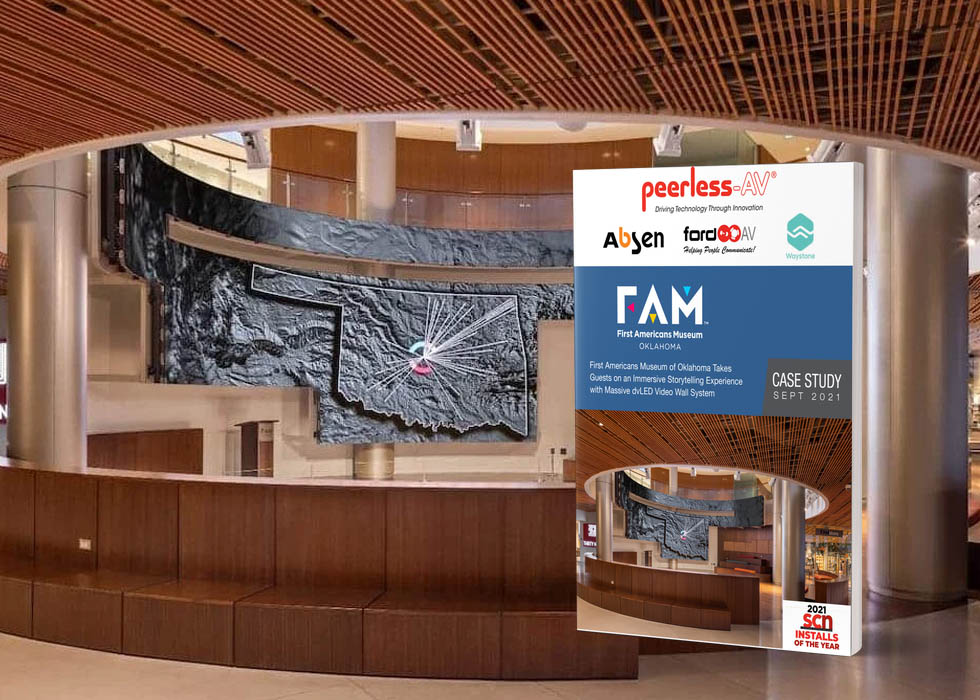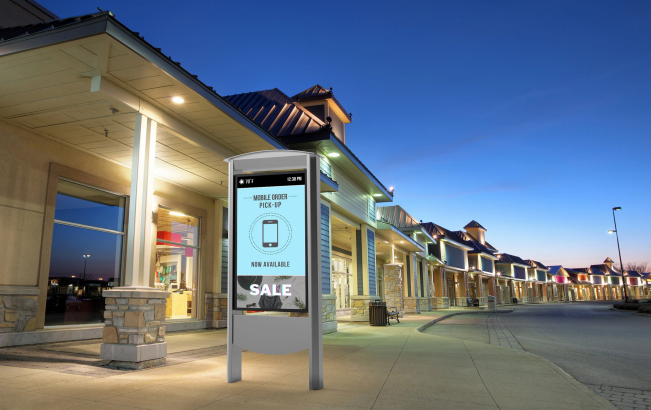Strategies for Maximizing Digital Signage ROI
 As with any other technology, digital signage’s benefits vary significantly by how each organization implements it. Here’s a few tips for maximizing those benefits and avoiding problems that undermine ROI.
As with any other technology, digital signage’s benefits vary significantly by how each organization implements it. Here’s a few tips for maximizing those benefits and avoiding problems that undermine ROI.
Compelling, regularly updated content is critical for attracting and keeping attention. It takes time, skill and resources to create and manage that content, but organizations frequently overlook or underestimate this aspect when deploying their first signage network. During the planning stage, make sure there’s ample budget to hire staff to create and manage content. An alternative is to outsource content creation and management, a service that some AV integrators now offer, sometimes via a partner.
Don’t overlook free, paid and revenue-generating content sources. For example, hospitals, clinics and outpatient facilities increasingly have digital signage in waiting areas. That’s an attractive audience for pharmaceutical companies and thus a source of advertising revenue to help fund a signage network’s construction and operation. “There’s more advertising now and the main reason is continued privatization and conglomeration of hospital companies,” Bocchiaro says. “It’s becoming more corporate driven.”
For any vertical, integrators can help businesses identify potential content sources. “In many cases, they don’t understand all of the things they have access to, [such as] from the manufacturers of the items they’re selling,” says James Gruening, Mechdyne Senior Vice President.
Finally, as digital signage becomes even more prevalent, so does the selection of companies available to provide content, including vertical-specific videos. In health care, one example is Outcome Health, which offers more than 13,000 videos of specialty-specific and educational health content.
 Find the right places and screen orientations. Digital signage’s effectiveness varies significantly by how and where it’s installed. Take the example of a supermarket chain with a mix of large stores and small, convenience-style locations. It initially installed signage in landscape mode along its stores’ main aisle. Later, it switched those displays to portrait mode and changed the content from text and photos to a mix that includes video. These two changes resulted in a 160 percent increase in customers remembering what they saw on those screens, Ratberg says.
Find the right places and screen orientations. Digital signage’s effectiveness varies significantly by how and where it’s installed. Take the example of a supermarket chain with a mix of large stores and small, convenience-style locations. It initially installed signage in landscape mode along its stores’ main aisle. Later, it switched those displays to portrait mode and changed the content from text and photos to a mix that includes video. These two changes resulted in a 160 percent increase in customers remembering what they saw on those screens, Ratberg says.
Identify success metrics at the beginning. Start by identifying all the ways you want digital signage to benefit your organization, such as increased sales, fewer injuries or greater productivity. Then identify ways to measure the impact. For example, suppose one goal is to increase employee participation in annual benefit updates so HR staff doesn’t have to spend time tracking down laggards. After the digital signage network has run those messages, compare the response levels and time to when they were disseminated only by email.
Leverage big data. If you’re already collecting data about employees or customers, scour it to look for places where digital signage could help. For example, if big data shows that shoppers sometimes buy two types of products in a single trip, digital signage could encourage others to do the same. Big data also could identify what buyers of one product might be interested in purchasing, with digital signage then used to build awareness of those other products.
 Look for additional locations with synergy. The obvious place to promote a product is the shelf where it’s sold. But depending on the product, signage in additional, distant locations can be just as important for driving sales. For example, digital signage near 4K TVs or 4K Blu-ray players could educate shoppers that they should check out the selection of AV audio systems that support 4K pass through. In a hospital, digital signage in waiting areas could advertise what’s available in the cafeteria for friends and family who get hungry while waiting. The same basic strategy can apply to just about any product that has synergies with other products located elsewhere in the building.
Look for additional locations with synergy. The obvious place to promote a product is the shelf where it’s sold. But depending on the product, signage in additional, distant locations can be just as important for driving sales. For example, digital signage near 4K TVs or 4K Blu-ray players could educate shoppers that they should check out the selection of AV audio systems that support 4K pass through. In a hospital, digital signage in waiting areas could advertise what’s available in the cafeteria for friends and family who get hungry while waiting. The same basic strategy can apply to just about any product that has synergies with other products located elsewhere in the building.
Don’t be afraid to experiment. When developing a digital signage strategy, consider starting with one or more small-scale pilots to identify the locations and content that have the most impact. Then use those insights to refine the strategy and budget. This advice sounds obvious, yet it’s often overlooked. “That’s the biggest thing that folks don’t try enough,” says Mechdyne’s Hancock. “Try a few things first. See if it makes a difference. And if it does, expand upon that.”
 Leverage security systems. Retailers frequently have video surveillance cameras throughout their stores, which means they’re already positioned to see how shoppers interact with digital signage. “If you position them right, you can use the same cameras and [other] infrastructure, and you can save a lot of money,” Ratburg says. Tap into those surveillance feeds to understand aspects such as dwell time and whether shoppers who watch a video go on to pick up that product.
Leverage security systems. Retailers frequently have video surveillance cameras throughout their stores, which means they’re already positioned to see how shoppers interact with digital signage. “If you position them right, you can use the same cameras and [other] infrastructure, and you can save a lot of money,” Ratburg says. Tap into those surveillance feeds to understand aspects such as dwell time and whether shoppers who watch a video go on to pick up that product.
Digital signage doesn’t come with guarantees. It has to be implemented correctly, starting with compelling content that’s refreshed periodically. Content is just one example of the myriad considerations that go into a successful digital signage implementation. AV integrators and consultants are uniquely qualified to help businesses understand all of those considerations and then develop strategies for addressing them.





